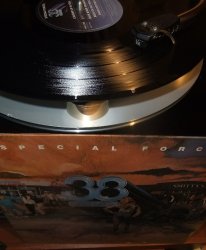- Joined
- Jun 23, 2022
- Messages
- 258
At the weekend I sat and played with the 'Shutter Speed' app (mainly because a new/old camera followed me home from a local charity shop and I wanted to check it out). Shutter speed is a great app to estimate slow shutter speeds, even just with sound.
However, it does not work with the flollopy noises made by Thornton Pickard-type focal plane or behind-the-lens blind shutters. I don't quite feel ready to buy the light gadget to make the shutter speed testing app more accurate. Then I had an idea and tried video.
It worked!
Has anyone else tried this? Is there an app, or a protocol to make it simpler?
(I do agree that accurate shutter speeds on TP shutters are unlikely to be helpful or consistent, but it can be nice to have a starting point for the necessary experiments).
However, it does not work with the flollopy noises made by Thornton Pickard-type focal plane or behind-the-lens blind shutters. I don't quite feel ready to buy the light gadget to make the shutter speed testing app more accurate. Then I had an idea and tried video.
It worked!
Has anyone else tried this? Is there an app, or a protocol to make it simpler?
(I do agree that accurate shutter speeds on TP shutters are unlikely to be helpful or consistent, but it can be nice to have a starting point for the necessary experiments).
Last edited:


